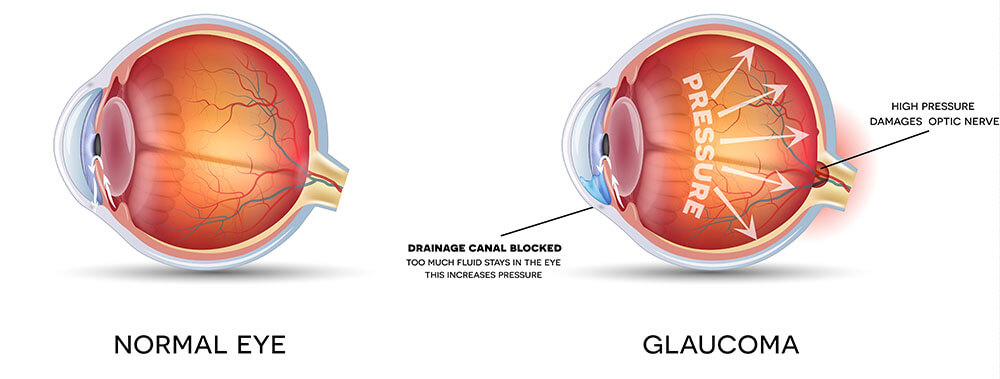
Glaucoma is a common eye disease that can lead to slow, painless vision loss. If you have family history with glaucoma, it is important to be screened by the age of 40.
Glaucoma is damage to the optic nerve, the cable that transmits sight from the eye to brain, caused by high pressure in the eye. This damage leads to permanent vision loss, typically starting with the peripheral (side) vision then progressing to the central vision.

In general, glaucoma results from the eye producing fluid faster than it can drain. The cause depends on the type of glaucoma:
Most types of glaucoma have no symptoms until significant vision loss has occurred. Therefore, it is critical to get routine eye exams to monitor for development and progression.
Angle closure glaucoma can have a sudden attack that results in severe pain, redness, nausea, headache, and vision loss. If these symptoms develop, you should immediately call your ophthalmologist or go to the nearest emergency room.
There are four ways to detect and monitor glaucoma:
Treatment options depend on the type of glaucoma:
Your doctor will discuss all of the treatment options and help you choose the best options for you.
8025 Roosevelt Blvd.
Philadelphia, PA 19152